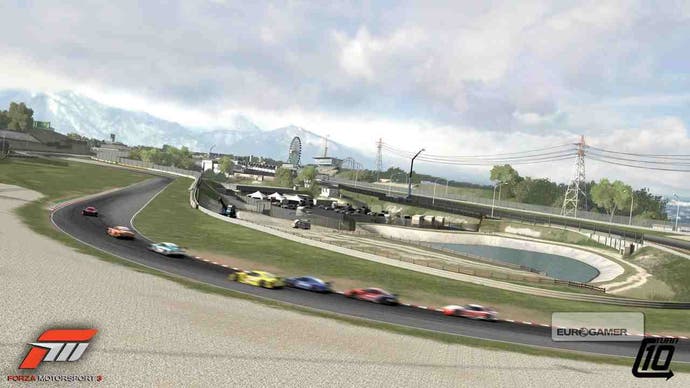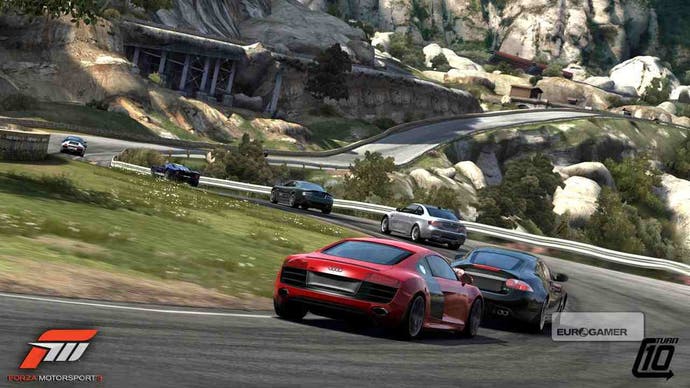Forza Motorsport 3
All will drive.
Turn 10's next avenue of attack on the genre's conventions is structure - always a problem in these games, bloated as they are with content, and unbalanced by upgrade options. Gran Turismos have become increasingly messy tangles of progression, while previous Forzas were simply a vast and featureless grid of samey events, and it was easy to lose your way in both. Forza 3 changes this with Season Play, which intersperses compulsory World Championship races with offered choices from three lesser events based on what car you're driving, or what cars and tracks you haven't tried yet.
It seems limited at first, until you realise that it means you can simply select a car you feel like driving and have the game suggest something appropriate, and tweak its performance via quick upgrade if necessary. This cleverly turns the emphasis around onto the game's stars, the cars themselves - but as with absolutely everything in Forza 3, it's no limitation, only an option. The event grid is still there if you would rather do it the old-fashioned way and pick the fight before the weapon. Neither is a perfect structure, but between them they offer the best solution to date for piling through these unwieldy games.
The final way in which Turn 10 has made Forza more approachable is the most subtle, but the most profound. It's the handling. Forza 2's handling model offered tremendous depth and satisfying heft, but on the surface, it was dry, a tad uninviting. With Forza 3, Turn 10 has managed something that not even GT creators Polyphony or simulation experts SimBin has done to date; loosen the handling, lighten it, add a flick of tail-happy PGR flair, a deliciously dynamic and supple relationship between car and road, and all without sacrificing one iota of sim credibility. In simple terms, it's kept the depth, but ladled on raw feel. It's a masterpiece.

That's superbly illustrated by the addition of drifting to the game. The implementation is basic: there are no single-player drift events, and there is no attempt to replicate complex real-world drift scoring - it's a simple time-based score ticker ripped straight from PGR. Nevertheless, drifting these cars - exploiting and manipulating the infinitely variable amount of grip - is simply so much fun in itself that it proves a huge draw as a score-attack multiplayer mode or a solo indulgence.
As for multiplayer, the word hardly covers what must be the most comprehensive online feature-set of any console game in history (bolstered, rivals take note, by an excellent, smooth-running, offline two-player split-screen mode). Match-making and match-finding is well-handled by the simple interface, and race rules can be set in ridiculous detail - but actual racing is only one facet of online interaction in Forza 3.

The series has been a quiet leader in community features and user-generated content ever since it first appeared, and Forza 3 takes huge strides forward in this area. The paint editor - incredibly flexible and only mildly unfriendly - and superb photo mode are as they ever were, as is the car auction house. But the Storefront is new. There you can browse replays, photos, full paint-jobs, vinyl groups (player-made logos and pictures to stamp on your car) and even tuning setups; you can rate them, and advertise your own.
It's extremely well put together and will be a huge boost to an already thriving community, providing them with a handsome showcase, and the average player with a great way to get the best from those parts of the game he doesn't want to delve into personally. Only the rather limited and poorly-integrated video editor fails to live up to the promises Turn 10 has made.


